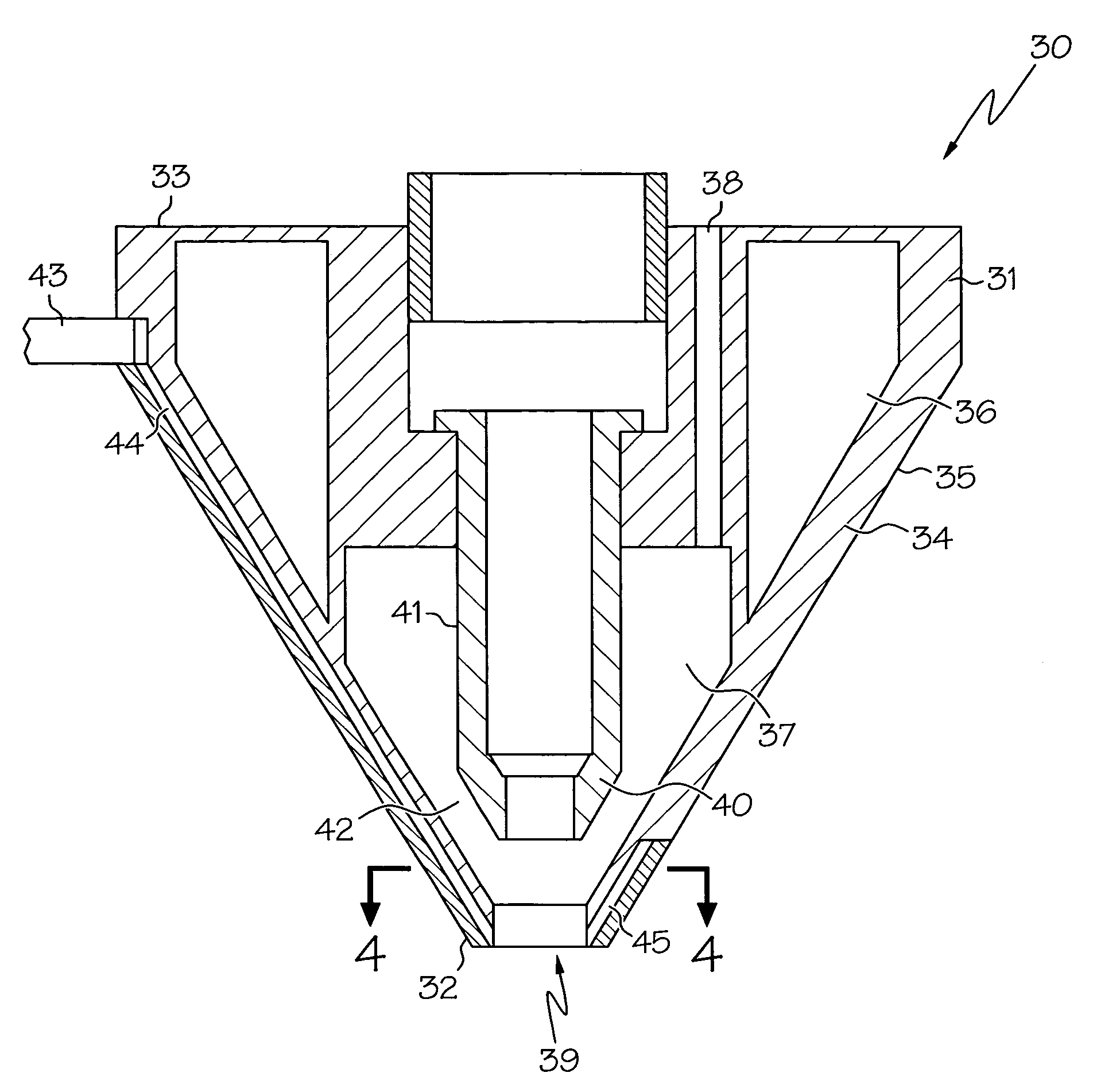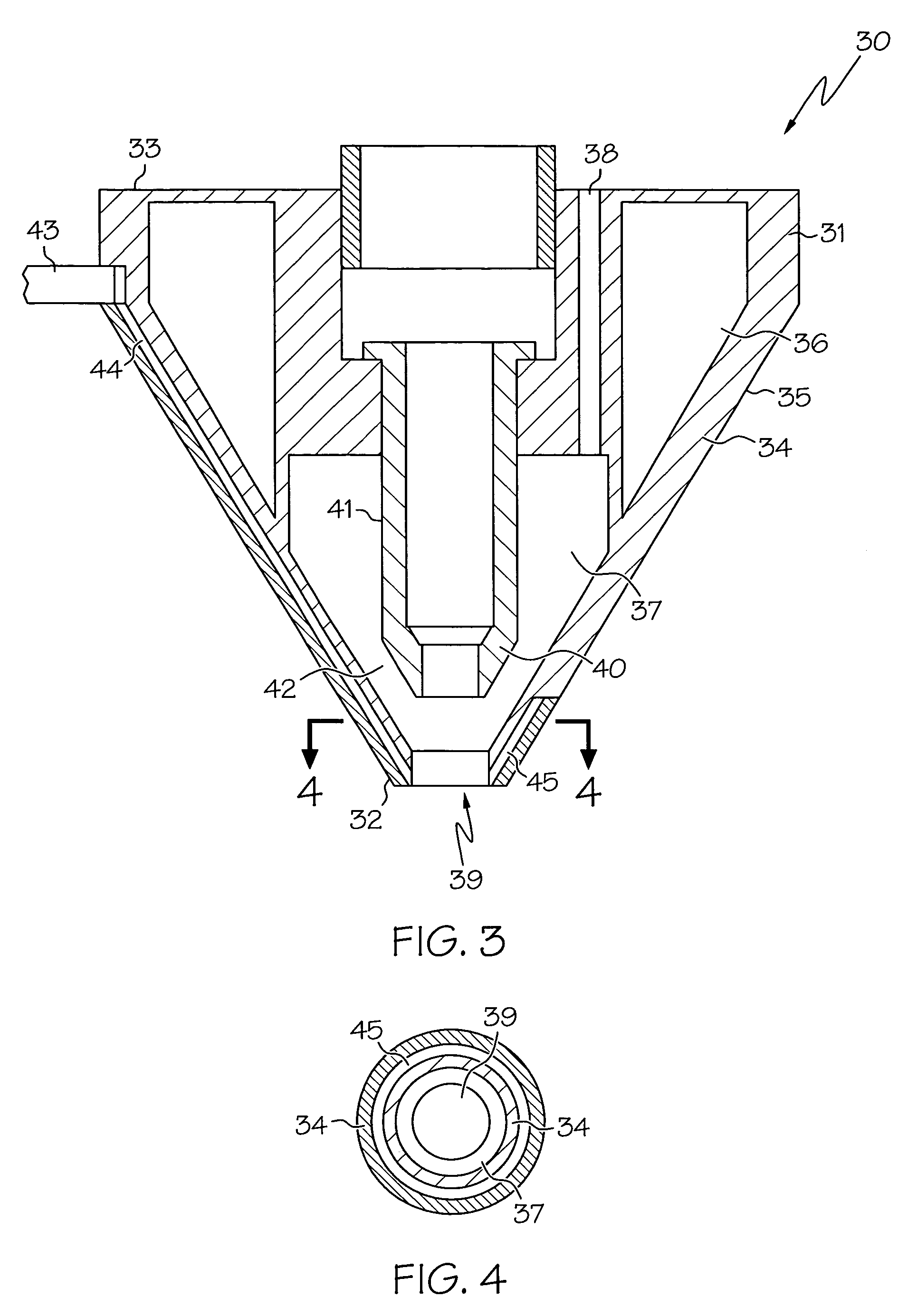Compact coaxial nozzle for laser cladding
a coaxial nozzle and laser cladding technology, applied in welding equipment, metal-working equipment, manufacturing tools, etc., can solve the problems of insufficient repair strategies of gas turbine engine components, high cost of components, and difficulty in achieving so as to improve the quality of inert gas blanketing
- Summary
- Abstract
- Description
- Claims
- Application Information
AI Technical Summary
Benefits of technology
Problems solved by technology
Method used
Image
Examples
Embodiment Construction
[0024]The following detailed description of the invention is merely exemplary in nature and is not intended to limit the invention or the application and uses of the invention. Furthermore, there is no intention to be bound by any theory presented in the preceding background of the invention or the following detailed description of the invention. Reference will now be made in detail to exemplary embodiments of the invention, examples of which are illustrated in the accompanying drawings. Wherever possible, the same reference numbers will be used throughout the drawings to refer to the same or like parts.
[0025]Referring now to FIG. 1 there is shown a representation of a prior art nozzle. The nozzle 10 includes a central chamber 11 through which is projected the laser. Chamber 11 includes laser transmission means such as fiber optic cables or laser-carrying channels and beam guides. Central chamber 11 extends until it terminates at tip 16 which is the point where a laser exits nozzle ...
PUM
| Property | Measurement | Unit |
|---|---|---|
| angle | aaaaa | aaaaa |
| temperatures | aaaaa | aaaaa |
| angle | aaaaa | aaaaa |
Abstract
Description
Claims
Application Information
 Login to View More
Login to View More - R&D
- Intellectual Property
- Life Sciences
- Materials
- Tech Scout
- Unparalleled Data Quality
- Higher Quality Content
- 60% Fewer Hallucinations
Browse by: Latest US Patents, China's latest patents, Technical Efficacy Thesaurus, Application Domain, Technology Topic, Popular Technical Reports.
© 2025 PatSnap. All rights reserved.Legal|Privacy policy|Modern Slavery Act Transparency Statement|Sitemap|About US| Contact US: help@patsnap.com



